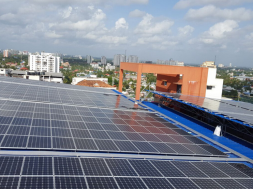
IHS Markit revises 2018 China solar PV outlook, in light of new 2020 PV target discussions in China
By Holly Hu, senior analyst, solar supply chain, IHS Markit
On October 30, 2018, the Chinese National Energy Administration (NEA) reported that China had added 34.5 gigawatts (GW) of solar photovoltaic (PV) power in the first three quarters of 2018, bringing the total installed PV capacity to 165 GW, just 1.5 GW higher than previously forecast by IHS Markit. NEA is now discussing new PV targets for 2020, with reported proposals ranging from 210 GW to 270 GW.
Based on these figures, the IHS Markit 2018 outlook for China has been raised from 37 GW to 40 GW. While it appears that China will maintain a steady level of annual installations, quarterly fluctuations will continue, shaped by policy-making decisions. The total cumulative PV capacity in China is forecast to reach to 255 GW at the end of 2020, resulting in around 40 GW of installations per year in 2019 and 2020. Further adjustments of these numbers will be made once there is clarity on final policy decisions.
As forecast, the limits on new PV installations announced by the Chinese government in May 2018 have resulted in a reduction of PV installations in the second half of the year.
However, the fall in module prices has bolstered demand even more than we first anticipated, and the prospect of a new policy sets the path for continued build-out of PV in China. The new figures from NEA, combined with the indications from the IHS Markit “PV Market Survey Trend – China,” caused an upward adjustment in these figures, to more than 40 GW.
With plans to more than double the original 105 GW PV target conceived in the 13th five-year plan to be achieved by 2020, the Chinese government has indicated its continued determination to lead the global build-out of renewable energy sources, as well as the manufacturing of solar PV cells and modules. China’s challenge will be to design a policy to install new PV installations in the most power-hungry regions at a lower cost than other energy sources. Any further increase in the current $17 billion subsidy payment backlog must be avoided. Support for distributed solar photovoltaics (DPV) with self-consumption, competitive tenders or lower feed-in tariffs, and further top-runner auctions are likely to be introduced in the wake of the new 2020 target.















